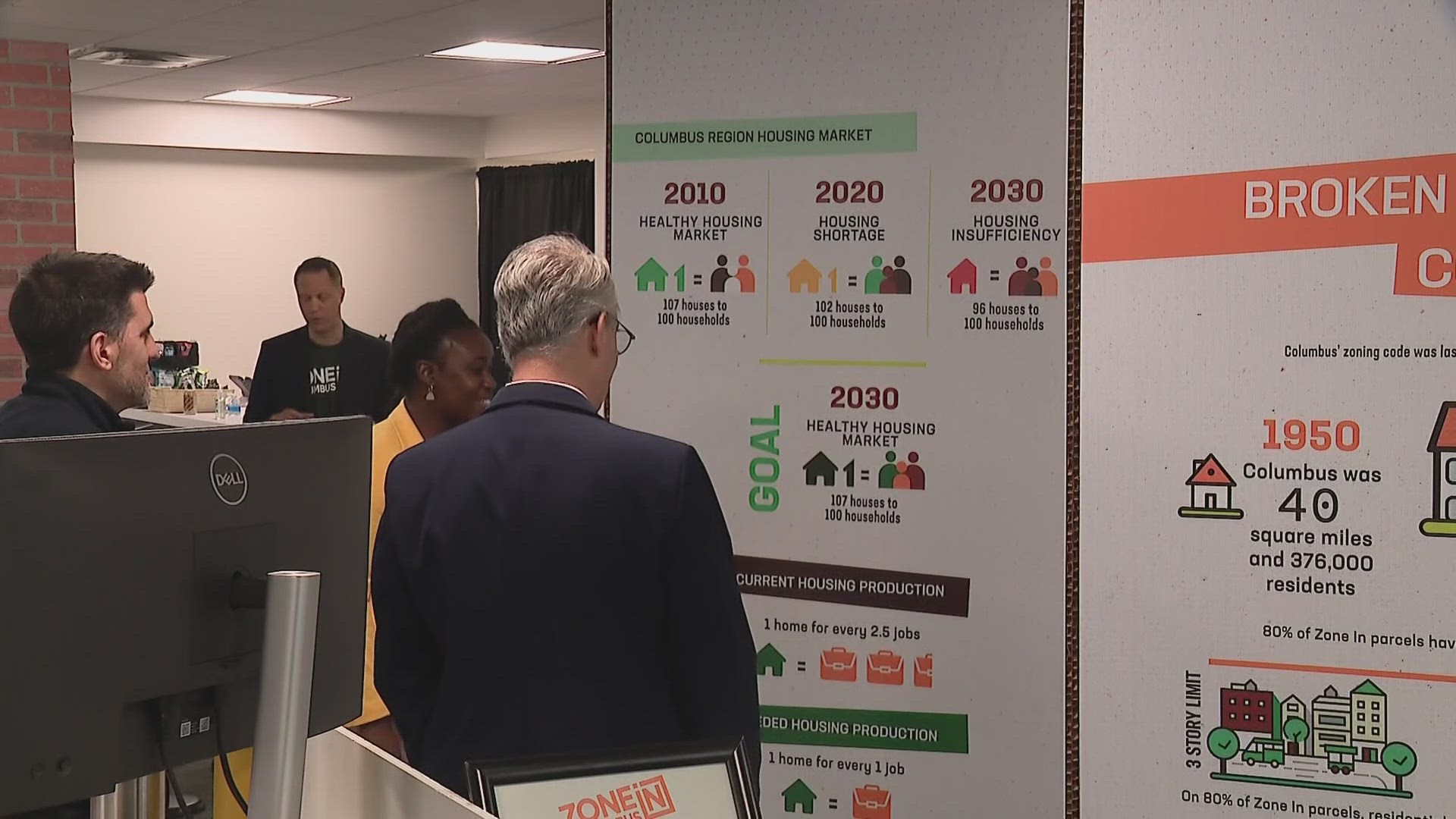COLUMBUS, Ohio — Columbus City Council voted Monday to move forward with plans to update the city’s zoning codes that would allow developers to build taller buildings with fewer restrictions, like parking minimums.
That move initiated a 60-day public comment period that will end on June 10.
The city has set up a Zone-In Gallery on North Front Street to give people an idea of what the zoning changes mean.
“This will allow for a much more consistent predictable way to develop and build and redevelop inside existing neighborhoods,” said Mayor Andrew Ginther.
The zoning changes would impact many of the main streets that run through city neighborhoods, like West Broad Street in the Hilltop.
Thomas Chahine, executive director of the North Hilltop Neighborhood Association, is excited about the potential for new development in the neighborhood.
“We do see this as a good step forward of redevelopment of West Broad Street and it could be a very good thing in promoting economic expansion and economic growth on this corridor,” Chahine said.
At the same time, he is concerned about the city’s proposal to be lenient on parking.
“If there is less parking, where are those individuals going to park?” he asked. “We see a lot of issues with the parking situation because it seems there will be less parking available for customers coming down West Broad Street to shop at our businesses.”
Ginther said the current parking rules, like the rest of the zoning codes that were established in the 1950s, are outdated.
“Sometimes we have a lot of parking requirements where it goes underused or unused completely and it could be better for housing for our neighbors who could be struggling to find a place to rent or buy in our community, so it is putting a higher value on people and knowing we have to value people as opposed to arbitrary requirements around parking,” he said.
Chahine is also concerned that new development could price people out of the neighborhood.
“There is a lot of concern of residents that they might be pushed out, taxes will increase substantially and we are concerned for our elderly residents who are already struggling to keep up with their tax bills as well as just paying their standard bills,” Chahine said.
Ginther said the zoning changes are intended to have the opposite effect.
“We want to make sure everyone who works in this region can afford to live here too and so that means we need more housing,” he said. “We know the two major figures for affordability are density and height, so we are going to have to grow differently if we want to grow dramatically and inclusively.”
In some areas, developers will be able to build an extra few stories if they allocate a certain percentage of units as affordable housing.
Ginther said the zoning changes and goals for more walkable communities go hand in hand with improving public transit.
The city is aiming to make public transit faster and more reliable through the Link Us project, which correlates with many of the neighborhoods targeted by zoning changes.
The city is accepting public input online. People can also visit the Zone-In Gallery on North Front Street and speak directly with a city planner.

